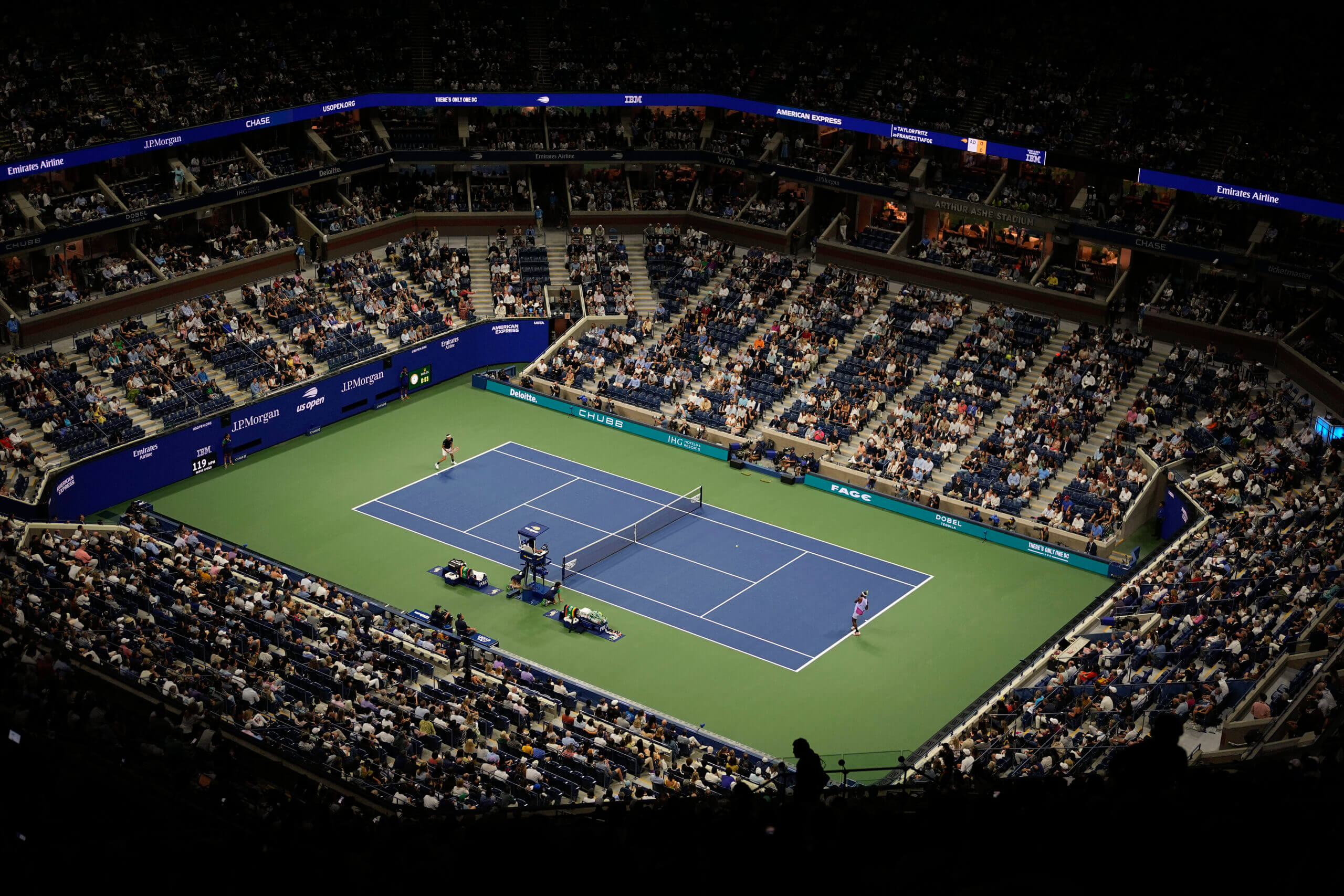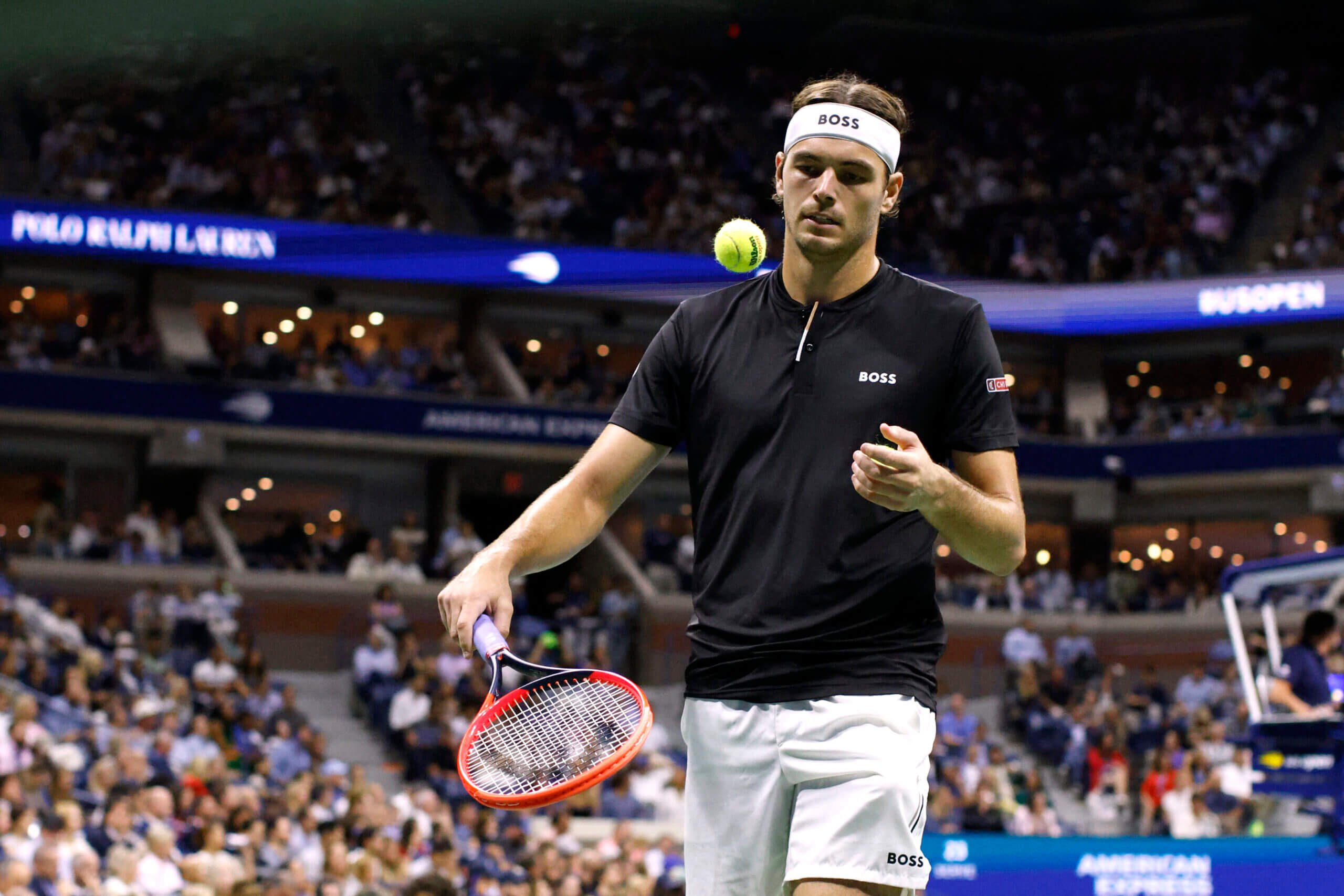
2024-09-07 20:25:02
NEW YORK — Taylor Fritz, the late blooming son of an American tennis star of the 1970s, is headed to the U.S. Open final to face down Jannik Sinner.
Relying on the big serve, expanding toolbox and thickening spine that have allowed him to compete with the best players in the world in recent years, Fritz twice fought back from a set down against Frances Tiafoe, his close friend and training partner from their teenage years.
“He was overwhelming me from the baseline,” Fritz said on the court. “I just told myself to stay in and fight.”
And he listened.
In the first U.S. Open semifinal between two American men in 19 years, Fritz triumphed 4-6, 7-5, 4-6, 6-4, 6-1. He is the first American man to reach the U.S. Open final since 2006, when Andy Roddick lost to Roger Federer.
Fritz will be a heavy underdog Sunday against Sinner, the Italian world No. 1 who has mostly plowed through his opponents the past two weeks, despite the occasional wobble. But Fritz has envisioned himself holding the U.S. Open trophy for years, even when that idea seemed preposterous to most.
He couldn’t care less about the other side of the net. He would play Sinner, Carlos Alcaraz and Novak Djokovic all at once for a chance like this.
“It’s the reason why I do what I do, the reason why I work so hard,” Fritz said through tears on court when it was over.

Taylor Fritz blew Frances Tiafoe away in the final set. (Kirsty Wigglesworth / Associated Press)
On this court, in this stadium, in front of this throng of nearly 24,000, with his home Grand Slam on the line and the chance to break the 21-year major drought for American men, don’t think he doesn’t like his chances.
Quietly, humbly, he is that confident these days, and he’s played like it the past 12 of them. He took out Alexander Zverev and Casper Ruud, both Grand Slam finalists before him, on the way to the semifinal against Tiafoe — an overwhelming crowd favorite who thrives on the vibes of Arthur Ashe Stadium, especially at night.
Two years after he upset Rafael Nadal on the way to lighting up New York with a scintillating five-set battle against Alcaraz, Tiafoe on Ashe at the U.S. Open under the lights has become a thing – for him and for everyone who shows up.

Frances Tiafoe wowed the crowd on Arthur Ashe — for most of the match. (Associated Press)
No matter how big a slump Tiafoe has endured the past months, or how underwhelming his play has been for a year, he sees the bright lights of the city and the big stadiums, hears the noise, and watches the big screens to see which of his celebrity idols who have become friends are there with him.
He comes alive, because, “it’s different on Ashe.”
Not against Fritz.
Those were Tiafoe’s words earlier this week after he booked his spot in the semifinal against the 26-year-old from southern California, who has dominated their matchup for eight years. Fritz had beaten Tiafoe six out of seven times, and now it is seven out of eight.
For most of Friday night, it wasn’t clear why. Fritz had the bigger serve, but Tiafoe nearly matched it and seemed to have just a few more shots in his racket. That’s what the match was coming down to — a few points in each set. To begin with, Fritz played the more sloppy ones at the worst times.
And then late in the fourth set, with Tiafoe serving to draw even at 5-5 and inch closer to the finish, he had one of those lulls that have plagued him through his career, on the biggest stage at the worst possible time. Double faults, errors, bad decisions. If there was a mistake to be made Tiafoe made it, and Fritz leapt to the moment, finishing off Tiafoe in the fifth set with an ace. It put him one step away from the place that he has always wanted to go.
A handful of points can make or haunt a player’s career. For opposite reasons, Tiafoe and Fritz won’t soon forget the final five points of the fourth set.
“It’s tough to swallow, Tiafoe said. “This one is going to hurt really really bad.”
A point from knotting the set and lifting the pressure on Fritz a few clicks higher, Tiafoe double-faulted twice, to let Fritz back into the game at 40-40.
Then he shanked a forehand way off the court. Suddenly set point down, Tiafoe then did what players always do when they suddenly lack the desire or confidence to battle through a point. He tried to escape it early.
The drop shot was doomed as soon as it left his strings. It settled meekly into the bottom of the net.
By now, Tiafoe’s body was cramping and he didn’t know why. “Shut down on me,” he said.
“Probably had a lot to do with nerves. I couldn’t really move.”
And so after two hours and 51 minutes, Fritz and Tiafoe, bunkmates at national camps for junior players when they were young teenagers, had a shootout for a spot in the final of their home Slam.

The fifth set promised to be a showdown. It was a procession. (Julia Nikhinson / Associated Press)
Fritz pumped his fist and took a seat on his chair, organizing himself like an executive preparing for a big meeting.
Tiafoe pulled off his shirt, leaned back and looked at the sky, unable to comprehend how he had let this slip away. He gargled pickle juice. He took on food. He drank. Anything to stay the cramps.
Fritz then put his foot down on his old friend’s neck, though he barely had to apply any pressure. He won the next seven points, and the next four games. Tiafoe never held his serve again.
For the better part of two sets and 90 minutes, Fritz had been able to do little more than hang in and hope that Tiafoe’s level might drop, as it almost always does over the course of a five-set match.
Fritz said he noticed early on that Tiafoe was deadly serious about his business. He hit, for him, a killer volley near the start of the match, the kind of shot Tiafoe usually smiles at, because it’s sort of lucky. Fritz tried to catch his eye. Tiafoe wasn’t smiling. His level was as high as it had been over two weeks in which it had been pretty high throughout. Maybe higher.
Now it was plummeting, even as the crowd tried to catch him on the way down.
It was hopeless. Fritz won 25 of the 34 points in the final set. Tiafoe won just four points on his serve, and none of the nine that began on his second serve.
When Fritz double-faulted to give back a service break in the fifth game, he looked at his box, spreading his hands apart, palms down to the ground, raising and lowering them like lungs. Calm. Calm. He laughed then, and got back to the business of making the final.

Taylor Fritz held his nerve long enough for Frances Tiafoe’s incredible tennis to drop a level. (Kena Betancur / AFP via Getty Images)
That isn’t where anyone thought he would ever be a decade ago, when he wasn’t even good enough to train on the first courts with the best players at the USTA training camps in Florida. Tiafoe, and Tommy Paul and Reilly Opelka were on those courts. Fritz was relegated somewhere else.
When he returned home to California, he told his mother, Kathy May, a two-time U.S. Open quarterfinalist, how embarrassed he had been. The other boys were so much better.
He used it as motivation then, and he has been playing to prove something ever since. He will get his biggest chance Sunday, when few will give him much of a shot against Sinner at the end of one of the biggest weekends in American tennis in decades.
On Saturday Jessica Pegula, daughter of Kim and Terry, the co-owners of the Buffalo Bills (and Terry, the owner of the Buffalo Sabres) will take on Aryna Sabalenka in the women’s final. Like Fritz, whose mother is an heir to the Macy’s retail fortune, Pegula comes from one of the country’s wealthiest families. They had plenty of advantages growing up, but also plenty of doubters. They could have listened. They could have decided there were easier ways to spend their time. They could have led a life of leisure.
They didn’t. They chose to compete in the take-no-prisoners world of professional tennis. Win or lose this weekend in their home Grand Slam, they will get at least part of the payoff they have been seeking for a long while.
(Top photo: Jamie Squire / Getty Images)






